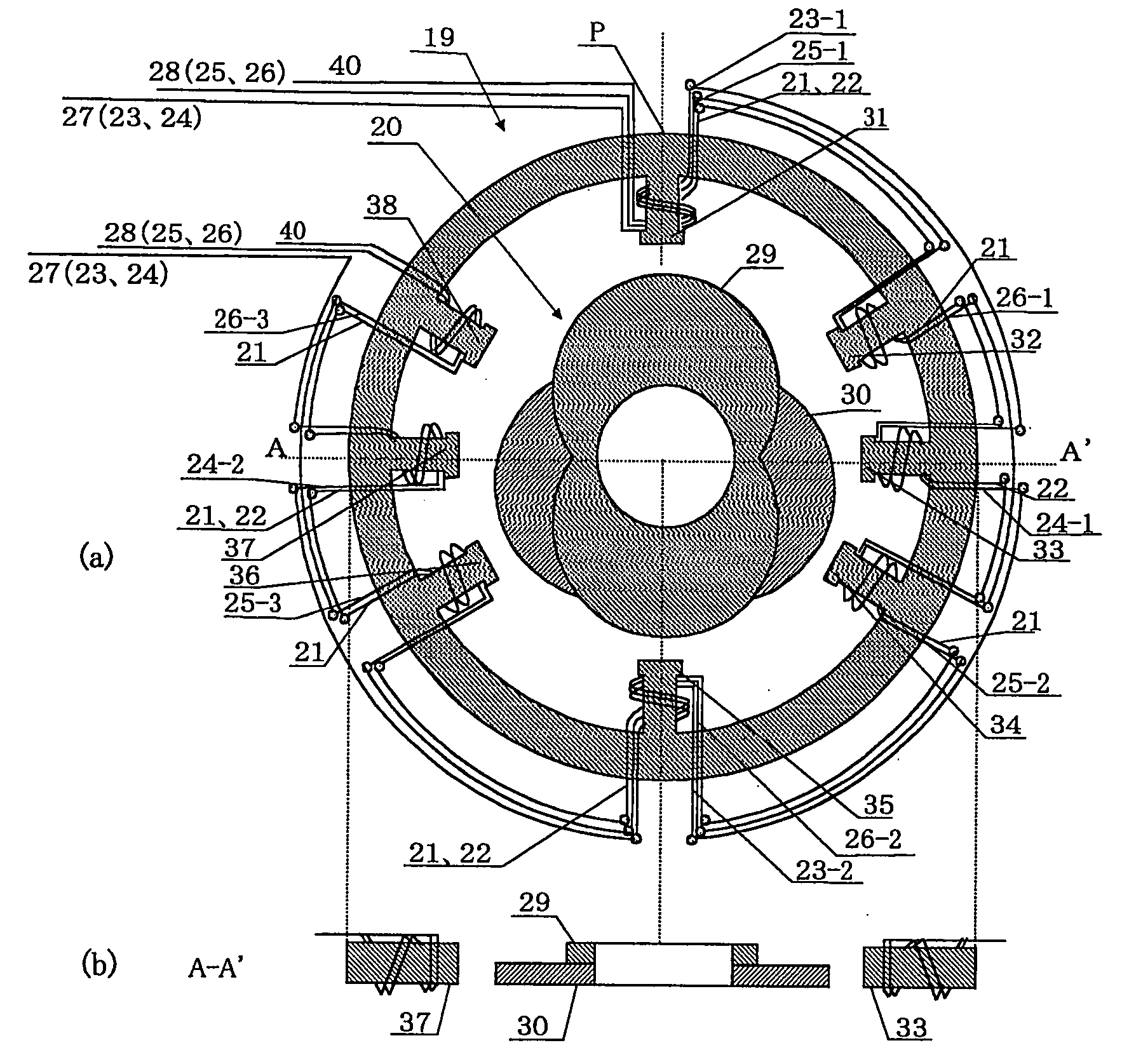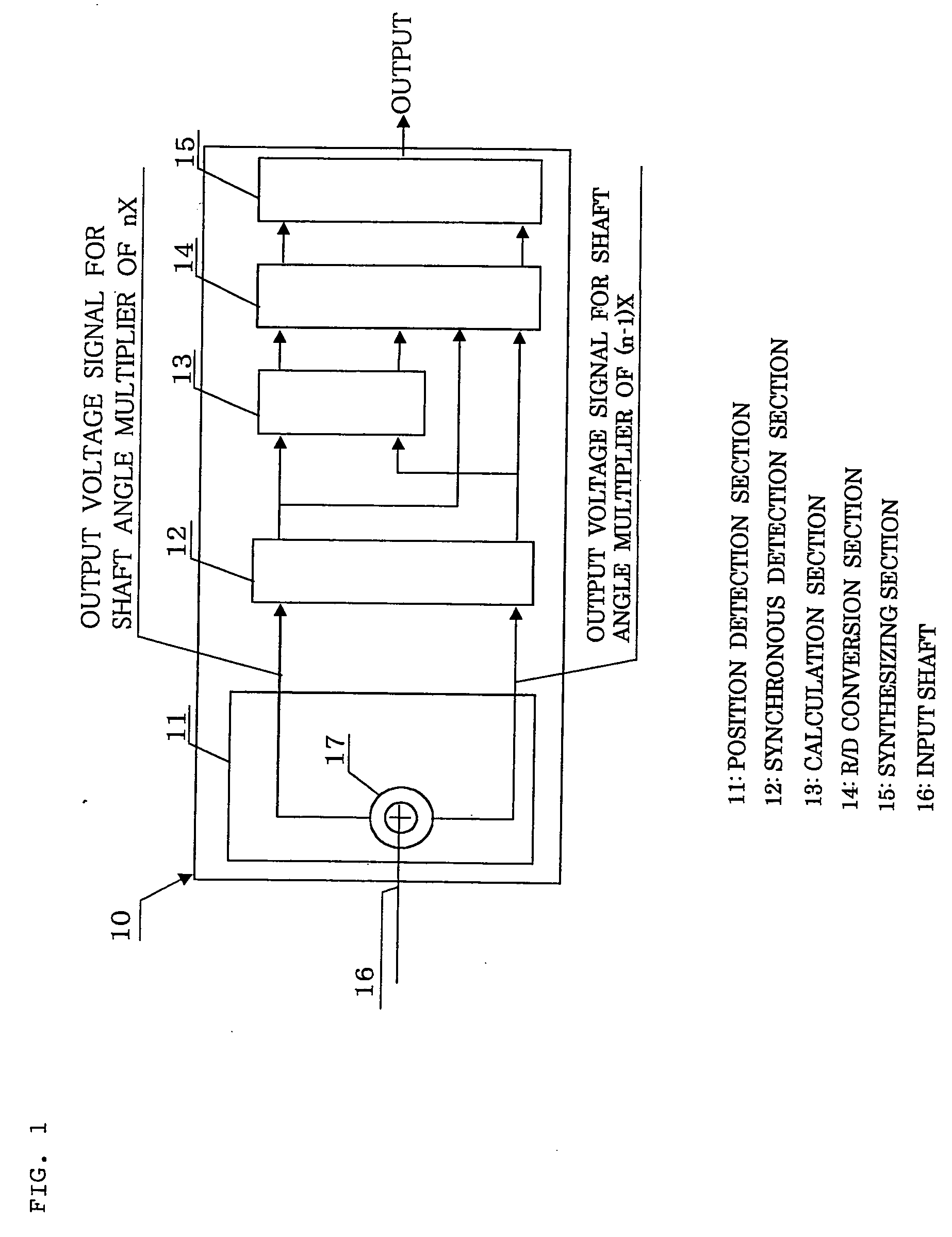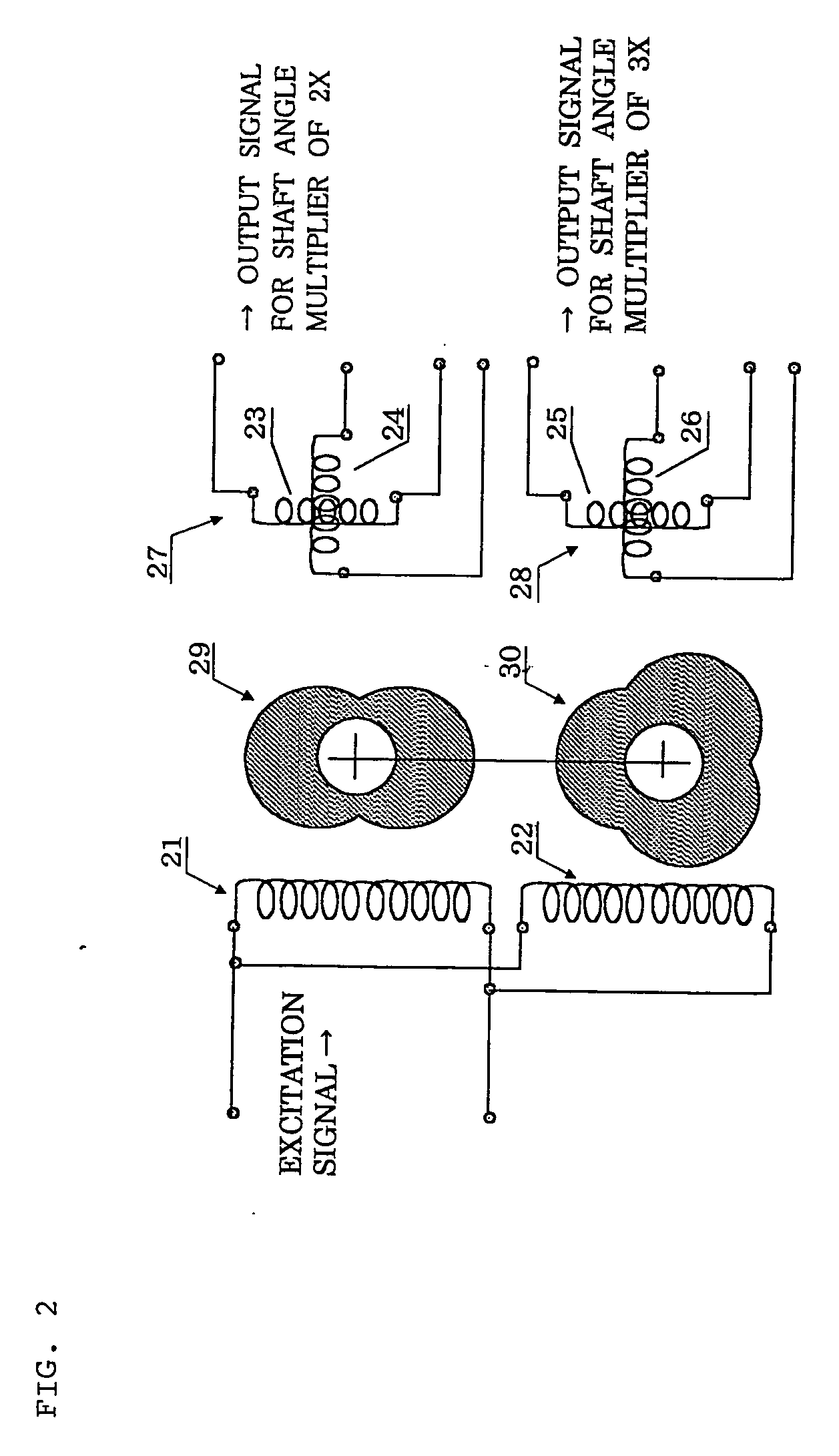Variable-reluctance resolver and rotational angle sensor using same
a technology of resistor and resolver, which is applied in the direction of electrical/magnetically converting sensor output, process and machine control, etc., can solve the problems of large output signal voltage error, large deviation of center deviation, and large deviation of accuracy of resolver. , to achieve the effect of reducing the influence of center deviation
- Summary
- Abstract
- Description
- Claims
- Application Information
AI Technical Summary
Benefits of technology
Problems solved by technology
Method used
Image
Examples
embodiment 1
[0052]FIG. 1 is a block diagram of a rotational angle sensor according to the present invention. A rotational angle sensor 10 includes a position detection section 11, a synchronous detection section 12, a calculation section 13, a resolver-digital (R / D) conversion section 14, and a synthesizing section 15. The rotational angle sensor 10 has a housing for accommodating these sections, from the position detection section 11 to the synthesizing section 15. Although the housing preferably assumes a sealed structure, the housing may assume an open structure in which one end of the housing is opened for assembly with a casing of counterpart equipment to which an input shaft 16 is connected. The synchronous detection section 12, the calculation section 13, the resolver-digital (R / D) conversion section 14, and the synthesizing section 15 are mounted on a circuit board as needed. Further, these sections are integrated into an IC (integrated circuit) as needed. The circuit board which carrie...
second embodiment
[0077] Also, the calculation section 13 obtains the 1× resolver signal by obtaining Asinθ as described in the first embodiment, and further, performs the following calculation while using the output of the synchronous detection section 12 in the first embodiment. Asin 3 θ·A cos 2θ+ A cos 3θ·A sin 2θ=A2sin(3 θ+2 θ)=A2sin 5 θ
Subsequently, the calculation section 13 converts the calculation result; i.e., A2sin5θ, to Asin5θ having the initial amplitude, and outputs Asin5θ. Thus can be obtained a resolver signal for the shaft angle multiplier of 5×; a continuous voltage signal whose period is 360 degrees (mechanical angle) and which consists of 5 triangular wave segments whose period is 360 / 5 degrees.
[0078] The R / D conversion section 14 receives the output voltage signal for the shaft angle multiplier of 1× and the output voltage signal for the shaft angle multiplier of 5× output from the calculation section 13 and, at each sampling time, converts them...
third embodiment
[0082]FIG. 4 is a view showing another example of the rotor of the present invention.
[0083] In the first embodiment shown in FIG. 3, the rotor is formed of a rotor portion having salient poles for the shaft angle multiplier of 2× and a rotor portion having salient poles for the shaft angle multiplier of 3×, which are superposed on each other. In the third embodiment, salient poles for the shaft angle multiplier of 2× and salient poles for the shaft angle multiplier of 3× are formed on a single annular plate such that the salient poles for the shaft angle multiplier of 2× are located on one side of a plane including the center axis, and the salient poles for the shaft angle multiplier of 3× are located on the other side of the plane. The salient poles for the shaft angle multiplier of 2× are formed in such a manner that a single complete salient pole is formed at the center and a half salient pole is formed on the left and right sides of the complete salient pole.
[0084] The numbers...
PUM
 Login to View More
Login to View More Abstract
Description
Claims
Application Information
 Login to View More
Login to View More - R&D
- Intellectual Property
- Life Sciences
- Materials
- Tech Scout
- Unparalleled Data Quality
- Higher Quality Content
- 60% Fewer Hallucinations
Browse by: Latest US Patents, China's latest patents, Technical Efficacy Thesaurus, Application Domain, Technology Topic, Popular Technical Reports.
© 2025 PatSnap. All rights reserved.Legal|Privacy policy|Modern Slavery Act Transparency Statement|Sitemap|About US| Contact US: help@patsnap.com



